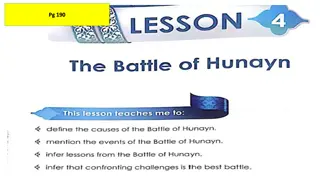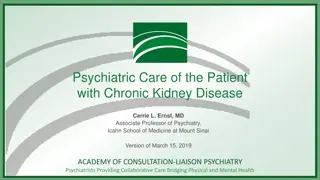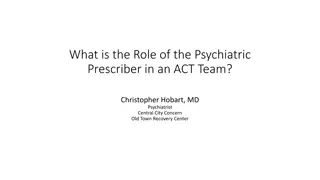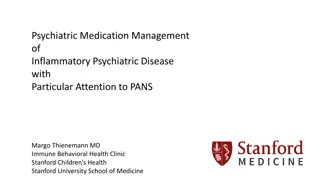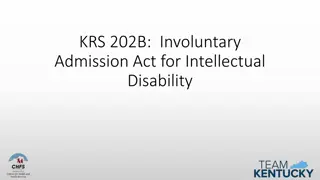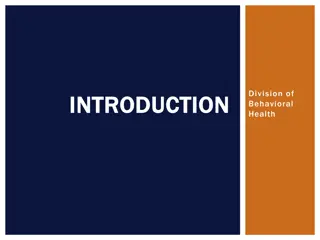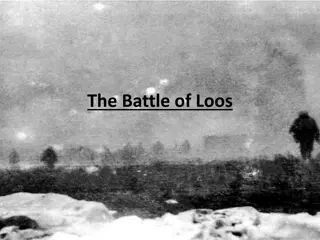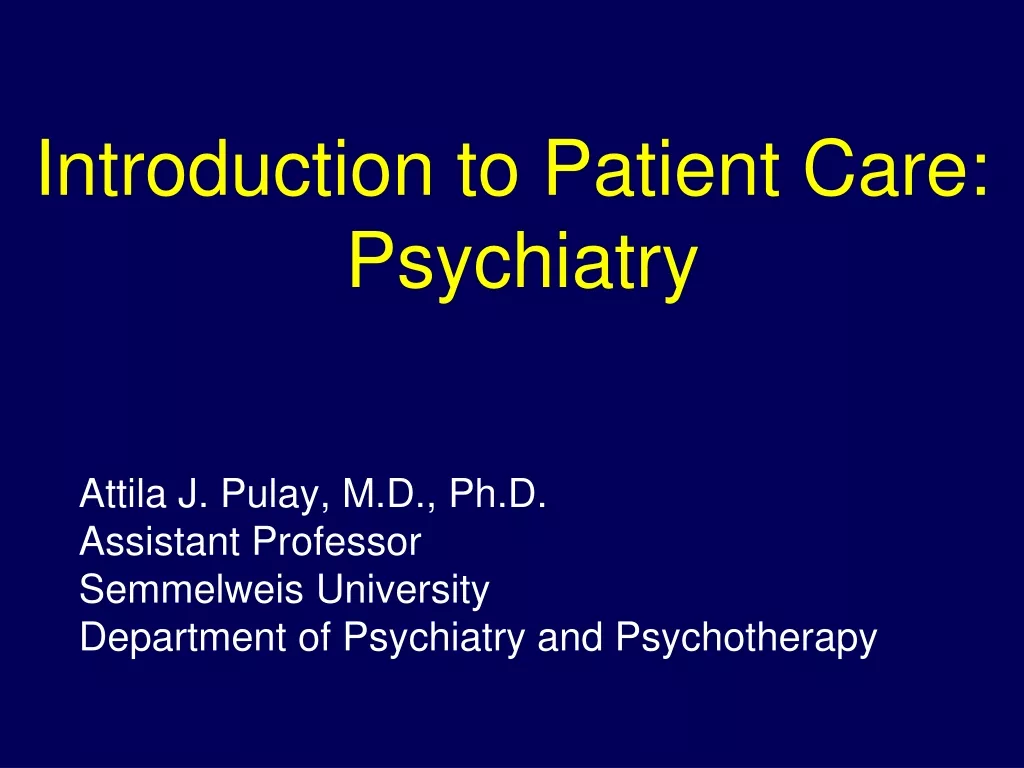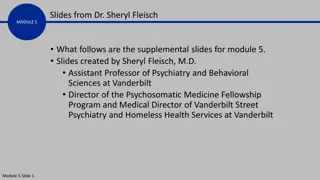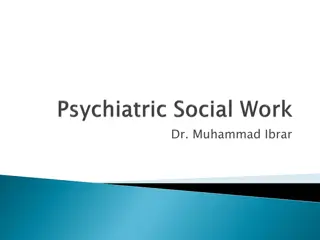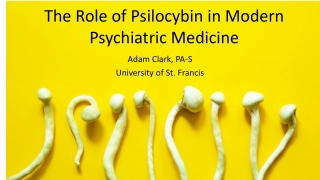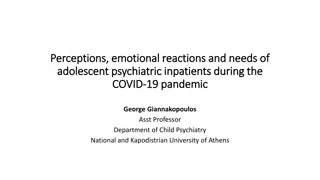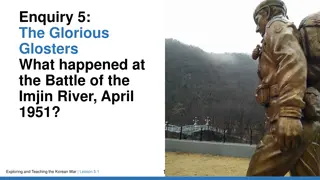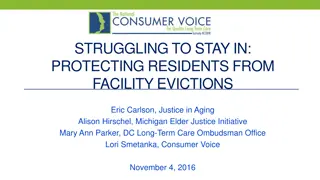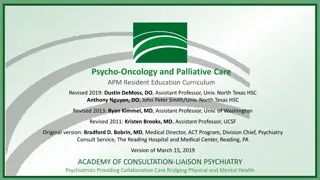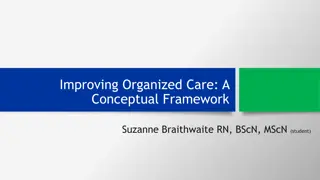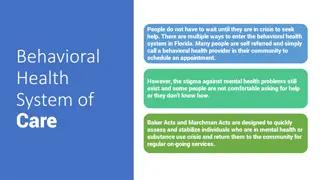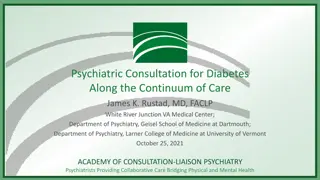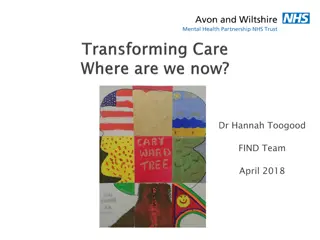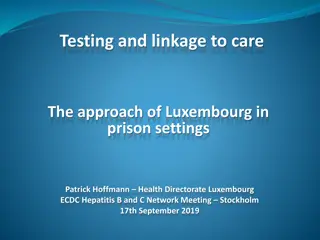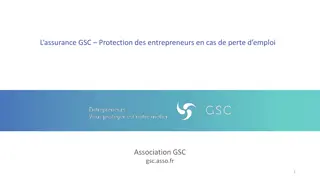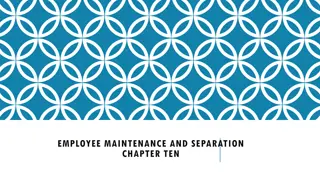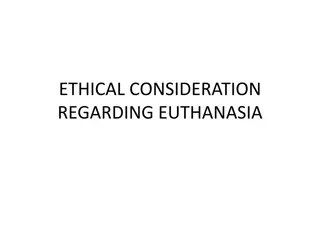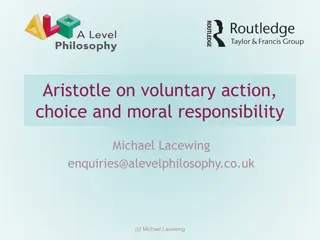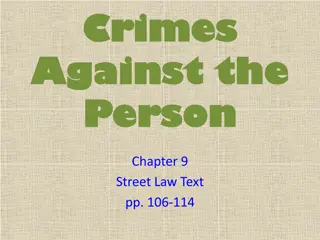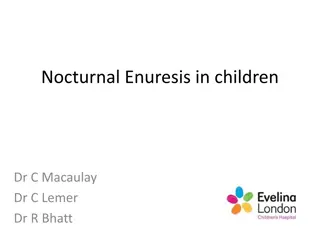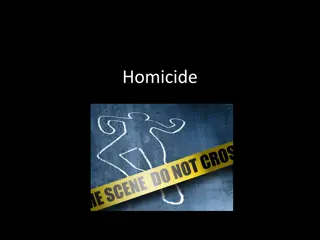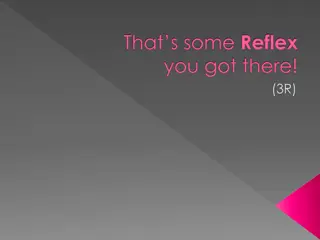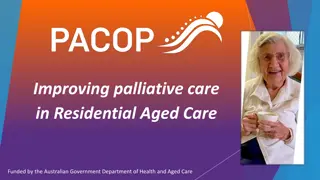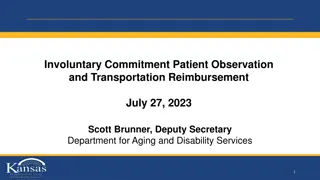Understanding the Battle Over Involuntary Psychiatric Care
Explore the complexities surrounding involuntary psychiatric care, including standards for commitment, patient rights, and differing perspectives from organizations like The Treatment Advocacy Center, NAMI, and The American Psychiatric Association.
Download Presentation

Please find below an Image/Link to download the presentation.
The content on the website is provided AS IS for your information and personal use only. It may not be sold, licensed, or shared on other websites without obtaining consent from the author. Download presentation by click this link. If you encounter any issues during the download, it is possible that the publisher has removed the file from their server.
E N D
Presentation Transcript
Involuntary Care: What you might need to know Dinah Miller, M.D. Co-author, Committed: The Battle Over Involuntary Psychiatric Care Assistant Professor, The Johns Hopkins School of Medicine Twitter handle: @ShrinkRapDinah
What is the Battle about? Standards for Involuntary commitment to hospitals Outpatient Civil Commitment (AOT, MOT, CTO s, OCC) A patient s right to refuse treatment/medications A patient s right to refuse release of their psychiatric information to caretakers (HIPAA)
THE BATTLEFIELD In Favor Against Involuntary Care
The Treatment Advocacy Center >We need more state hospital beds >Mandated care for those in need of treatment >Proponent of outpatient commitment laws >Anosognosia justifies involuntary treatment
National Alliance on Mental Illness >A grassroots organization started by parents >Support, education, advocacy >Now with 180,000 paying members and includes patients and those representing the interests of those with less severe illnesses
The American Psychiatric Association ~38,000 psychiatrists ~ Dangerousness as the standard for involuntary care ~In December, 2015 came out with a carefully worded stance in favor of outpatient civil commitment
The Bazelon Center for Mental Health Law The Bazelon Center envisions an America where people who have mental illnesses or developmental disabilities exercise their own life choices and have access to the resources that enable them to participate fully in their communities.
The Recovery Movement The Recovery concept speaks to maintaining consumers autonomy and having them take a proactive role in their treatment >It is a backlash to psychiatry as paternalistic field where where people with certain diagnoses were given dismal prognoses >The Recovery Movement was started by consumers and includes an emphasis on peer supports
MindFreedom, International >Started by David Oaks in the 1970 s first as the Mental Patients Liberation Front >In 1986 Became MindFreedom, International (MFI) >Psychiatric survivors who assert they have been injured by the treatment they have received and want to protect others from the same fate
The Citizens Commission on Human Rights (CCHR) Started by Dr. Thomas Szasz, author of The Myth of Mental Illness, 1961 and the Church of Scientology in 1969
THE BATTLEFIELD CCHR/ TAC MindFreedom The Recovery Movement NAMI Mad in America APA The Bazelon Center
We live in a world where opinions are sharply polarized We value autonomy in medical decision making And when there is controversy about the validity of a treatment, then there is even more controversy about forcing it on people
My observations over time People are involuntarily hospitalized because: they are acutely psychotic or they are acutely suicidal (or both) Symptoms decrease during the course of a hospitalization
We, as psychiatrists, might expect patients/clients/consumers to be grateful for the help they have received during times of distress and desperation Psychiatry has traditionally stayed away from the idea that treatment can be traumatizing for some people
If you start off with the idea that forced care is a good thing, that it helps people get well at times when they may be too sick to recognize that they are ill, and that treatment enables them to stay housed, working, connected to their loved ones, and out of jail and institutions, then you want it to be easier for people to get care, even if they don t want it.
But if you start off with the idea that forced care is potentially traumatizing, in a way that leaves some patients with years of distress, which may dissuade them from seeking care later, then you alter your threshold for committing people to involuntary treatment.
But the issue is complicated. We have The patient/client/consumer who may be suffering and unable to see they are sick who may have very valid reasons for not wanting to take the medications psychiatrists have to offer who ideally should have the right to refuse treatment
The family who watch a loved one suffer, deteriorate, and miss opportunities who don t want to see loved ones homeless or incarcerated who may be at risk of violent behavior
The Mental Health Professionals Who want to do what is best for the patient Who want to follow both legal and ethical mandates Who want to be paid for their work Who don t want to be sued for a tragic outcome
Society: Who may be at risk of violent behavior-- a risk that has been exaggerated by the media The Taxpayer: Who foots the bill for disability payments, lost productivity, uncompensated medical treatment, and institutionalization
The insurers Who want to pay for as little care as possible and who serve as the gatekeepers to most care
Lets make some assumptions Let s start with the assumption that psychiatric care may be traumatizing, and fears of involuntary or unkind treatment may discourage people from getting help. Let s also agree that it is never in someone s best interest to seriously injure himself or anyone else, and that there are circumstances where there may simply be no other option but to commit someone to the hospital for care, and to use physical force to keep everyone safe
From the perspective of the treatment team, involuntary care puts us in the awkward position of being the adversaries to the people we are serving
Welcome to slide #27! Have you noticed that there have been no charts, no graphs, no statistics? Let me tell you what we don t know
Involuntary Treatment for Suicide Prevention ~It s thought that 90% of completed suicides occur in people with psychiatric disorders (diagnosed or undiagnosed) ~Suicide is often an impulsive act and most (2/3) gun deaths are suicides, not homicides ~We don t know if involuntary treatment prevents suicide, but it s awfully hard to let an acutely suicidal person leave the Emergency Department
Psychiatric care is about alleviating suffering and helping people to live full and productive lives. Involuntary treatment needs to take the individual patient s best interests (both now and over time) into account.
So whats a mental health professional to do? >Careful assessment with as many sources as possibly and consideration of alternatives >Try to engage the patient in voluntary care >If that doesn t work, try harder >Explain the consequences of not agreeing to voluntary treatment Coercion may be better than legal commitment Warning: while these suggestions are well-intentioned, they may not work
If there is no other option, treatment should be forced: A traumatized person is better than a dead person We need to be nice to involuntary patients: our hope is that they will benefit from remaining in our care. No one wants to have an antagonistic relationship with someone they are trying to help.
Once the patient is in the hospital Obviously, minimize the use of physical force (but there is a downside) Small acts of kindness are often greatly appreciated Ask people at the end of their stay for feedback
From the perspective of a Peer Recovery Expert-- What do you do when you are very worried about someone you are working with? ~If anyone is at imminent danger of physical harm, Call 911
If the danger is not immediate: ~Share your concerns with other members of the Treatment Team, including the person s psychiatrist/therapist ~Speak with family members if you have permission NEVER WORRY ALONE
What Options Are Available if Someone Refuses to Seek Treatment? ~Emergency Petitions ~Extreme Risk Protective Orders
How can we prevent involuntary care, or at least make it less traumatizing? Make voluntary care more accessible earlier in the course of an illness Police training to minimize injuries, death, and embarrassment, and to increase cooperation. We need better medications with fewer side effects. *Decrease Stigma!
A final thought: its a little crazy that we invest so much in the discussion and legislation of involuntary treatment when there so many people who want treatment but are unable to access voluntary care.


